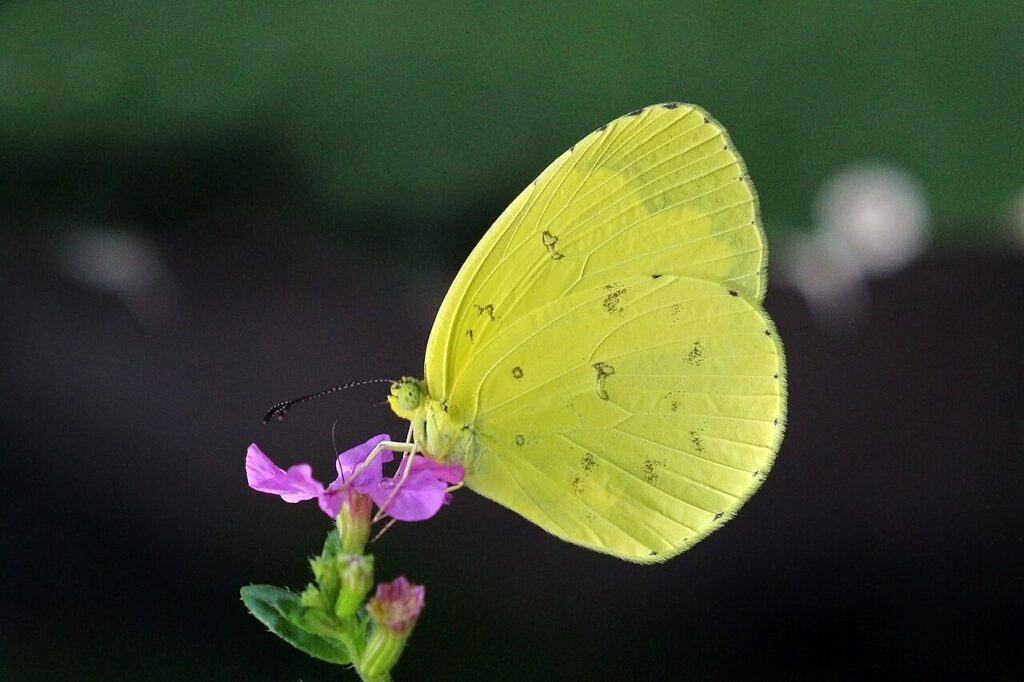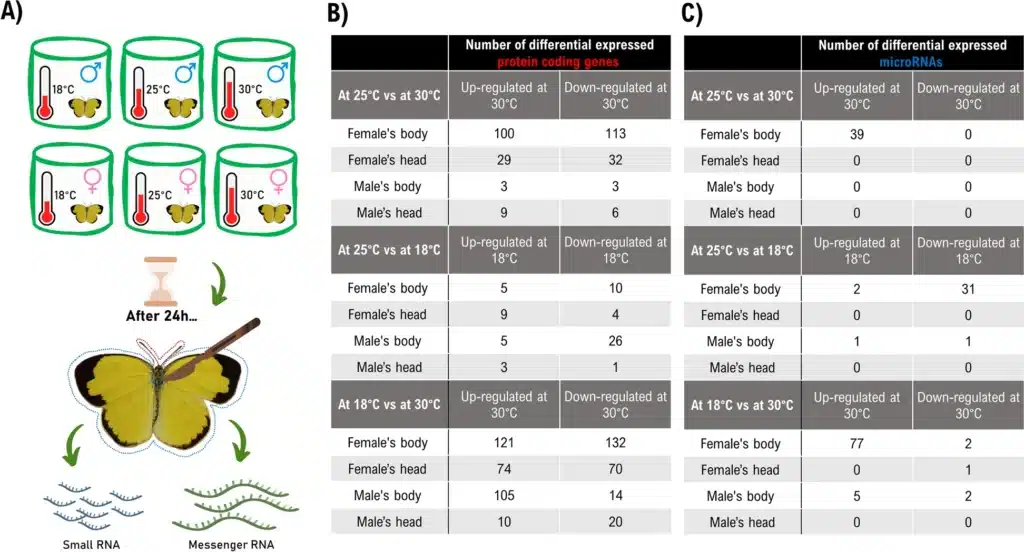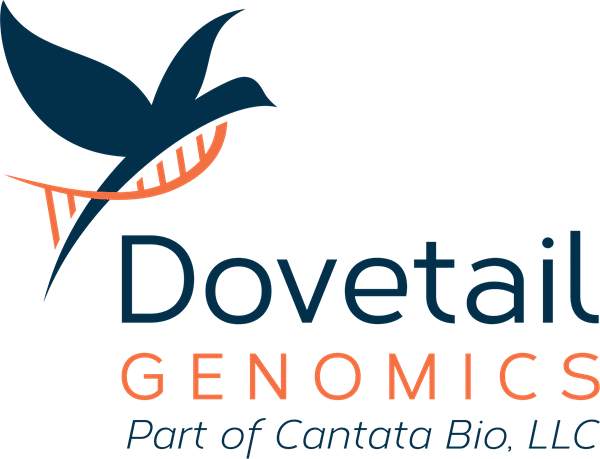Menu
Menu

Eurema hecabe, the common yellow butterfly, are widely distributed across Asia, Africa, and Australia. Easily identifiable by their vibrant yellow coloration and variability in wing patterns, they are known for seasonal movements during migration across wide areas. They fulfill crucial functions in the ecosystem and agriculture by serving as pollinators, herbivores, and prey. As with most butterflies, E. hecabe depend on environmental cues, temperature in particular, to trigger reproduction, migration, and hibernation. In recent years, changing climatic conditions and extreme temperature events have impacted numerous butterfly populations worldwide. Common trends include reduced reproductive success, alterations in behavior, and on some occasions lethality. Higher temperatures and unpredictable freezing events pose a threat to the survival of butterflies during hibernation, interferes with the growth of their food sources, and alters their migration patterns. Their development relies on particular larval food plants and specific microhabitat structures which are being threatened as ecosystems change.
While it is often hypothesized that variations in animal physiology between sexes could lead to diverse responses to environmental changes, certain studies indicate that males and females may display distinct immune and reproductive responses, ultimately contributing to differences in their adaptive capabilities. However, most contemporary studies still treat species as having a unified response to temperature changes leaving sex-specific responses mostly unexplored. This study works to narrow that gap and focuses on E. hecabe and its associated Wolbachia strains – diving into 8 developmental stages, adults cultured at different temperatures, and genomic views of both sexes.
Adult male and female E. hecabes were subjected to distinct temperature ranges to unveil the transcriptomic responses in messenger RNA (mRNA) and small RNA (sRNA) in both their heads and bodies. While the responses of protein-coding genes in heads and bodies showed overall similarity between the sexes, a notable divergence emerged between 25°C and 30°C. During this temperature range, there was a more pronounced difference in the expression of genes across various tissues in females compared to males. Hormonal systems also exhibited distinct responses, exemplified by certain genes like mevalonate kinase (MVK) being upregulated in female heads at 25°C but downregulated in male heads at 30°C. The intricate world of microRNAs also demonstrated differential responses to environmental cues between the sexes. Notably, members of miR-2733 were upregulated specifically in the female body at 30°C, setting it apart from other temperature treatments.

Transcriptomes of heads and bodies of male and female adults of E. hecabe treated at different temperatures. A Schematic diagram showing the experimental design. B Table summarizing the number of differentially expressed protein-coding genes in different tissues of different sexes at different temperatures. C A table summarizing the number of differentially expressed microRNAs in different tissues of different sexes at different temperatures. ref: https://bmcbiol.biomedcentral.com/articles/10.1186/s12915-023-01703-1#Sec8
While the various tissues of male and female E. hecabes butterflies exhibit diverse responses to temperature changes, encompassing variations in the expression of crucial hormonal genes and noncoding microRNAs, a considerable realm of knowledge remains undiscovered beyond their genetic alterations. This study serves as a stepping stone for future investigations into their migratory behaviors, subpopulation dynamics, speciation events, and the direct impacts of climate change. As temperatures continue to rise with the looming climate crisis, the pursuit to better understand how organisms such as E. hecabes are affected becomes crucial to their conservation.
 100 Enterprise Way
100 Enterprise Way